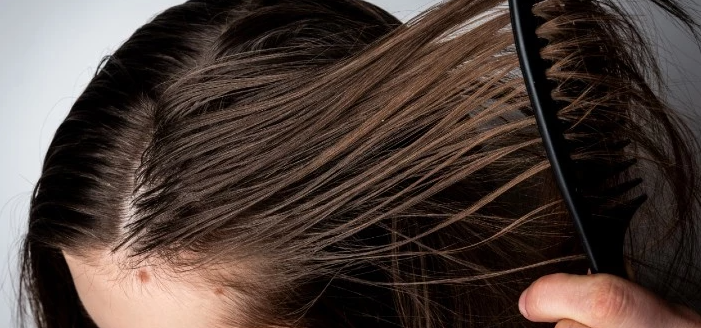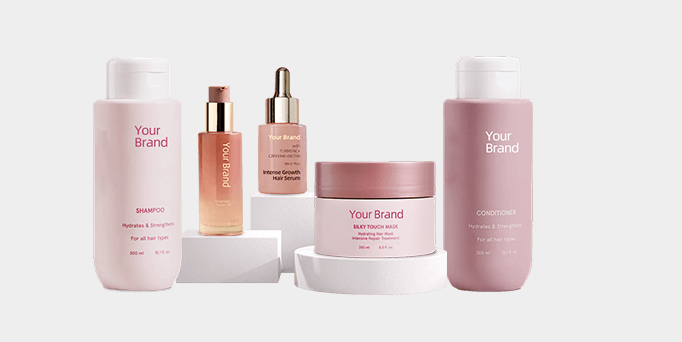In today’s highly segmented personal care market, hair care is no longer just about washing your hair. Especially for the high-frequency care need of “oily scalps,” an increasing number of consumers are seeking customized products that can control oil without damaging the hair.
If you are seeking a private-label hair care manufacturer and plan to launch hair care products tailored for those with oily scalps, this guide will provide you with a comprehensive, actionable product development framework.
We will delve into the product logic, ingredient design, efficacy implementation, formulation differentiation, and collaboration with skincare manufacturers for co-development, helping you create a truly market-competitive private-label hair care product.
Why is the oily scalp care market worth investing in?
The global hair care market is gradually shifting from basic cleansing to more refined, effective care, and “scalp care” as a sub-segment is growing particularly rapidly. According to Statista data, more than 30% of consumers say they pay more attention to functional labels such as “oil control,” “scalp soothing,” or “deep cleansing” when purchasing hair care products.
Causes of Oily Scalp and Care Strategies
Before developing products, it is essential to thoroughly understand the causes of oily scalp to ensure precise and effective formulations.

Compared to dry scalp and damaged hair, oily scalp has several typical issues:
- Frequent shampooing, with the scalp easily producing oil and sweat;
- A stuffy scalp in summer and excessive dandruff in winter;
- Scalp barrier damage caused by over-cleansing;
- Flattened hair roots, making it difficult to maintain hairstyles.
These issues stem not only from cleansing but also from an imbalance in scalp environment and sebum secretion. Therefore, entering this niche market requires more than just creating a “refreshing shampoo.” It demands a deep understanding of user needs and scalp structure, coupled with collaboration with a suitable private-label hair care manufacturer to refine the formulation.
Development Approach 1: Formula and Ingredient Design
In the past, oil-control products primarily focused on “powerful cleansing,” but this approach no longer aligns with current consumer preferences. Today, consumers prioritize “gentle conditioning” combined with “long-lasting oil control,” meaning products must effectively remove oil without damaging the scalp.
Your product development can be approached from the following aspects:
Formulation structure design must be scientifically sound
For a product targeting oily scalps, the core should focus on:
- Gentle cleansing ingredients: Recommended surfactants include amino acid-based or glycoside-based surfactants (e.g., sodium lauroyl glutamate, cocamidopropyl betaine), and avoid using SLS/SLES;
- Oil-controlling and regulating ingredients: such as zinc PCA, tea tree oil, rosemary extract, and willow bark extract;
- Soothing and repairing ingredients: such as centella asiatica, panthenol, and aloe vera;
- Scalp microbiome balancing factors: such as prebiotics and lactobacillus ferment, which help stabilize the scalp microbiome.
The usage experience should be “clean yet not dry.”
Oil control does not mean removing moisture. You can add hair conditioners (such as plant keratin, plant essential oils) to the conditioner to address the issue of “dryness after washing,” making the usage experience more layered.
Development Approach 2: Product Types and Diversified Layout
In actual development, one should not be limited to a single category of oil-control shampoo. A mature hair care brand should establish a complete oily scalp care system, such as:
- Oil-control shampoo: Focuses on daily cleansing and scalp oil regulation;
- Scalp toner/astringent: Used after shampooing to deeply soothe and control oil;
- Exfoliating scrub: Used 1–2 times per week to remove oil buildup and maintain follicle cleanliness;
- Lightweight conditioner: Avoids heavy silicones, opting for a lightweight hair care solution;
- No-rinse scalp spray: Addresses daytime oiliness, providing quick refreshment and styling.
A diversified product portfolio enhances brand loyalty while increasing repurchase rates.
Development Approach 3: Testing, Validation, and Consumer Experience
For users with oily scalps, they tend to prefer products that deliver “visible results.” Therefore, after the formulation is developed, conducting third-party clinical efficacy testing is particularly critical. For example:
- Reduction rate of scalp oil;
- Freshness and longevity after washing (12 hours, 24 hours);
- User satisfaction surveys, etc.
Additionally, packaging should highlight labels such as “silicone-free,” “oil-control without dryness,” and “suitable for sensitive scalps” to enhance consumer trust. This strategy has been proven effective in many successful skincare brands, and scalp care essentially falls under the extension of “skin management,” where users also value scientific backing and a sense of safety.
How manufacturers influence product quality and speed
Choosing a good private label hair care manufacturer is equivalent to laying the foundation for your product. Especially when it comes to products for oily scalps, which are “high standard and high sensitivity,” the manufacturer’s R&D depth, raw material sources, and efficacy verification capabilities are crucial.
You can focus on the following dimensions:
1. Do they have an independent R&D team dedicated to scalp care?
Scalp products involve not only cleansing but also “skin care” aspects. Therefore, companies with a background in skin care manufacturing often have more experience in scalp health care products. For example, they understand how to regulate keratin, control inflammatory responses, and conduct skin irritation tests.
2. Can they provide formula versions tailored to different scalp types?
Excellent hair care manufacturers typically offer a formula library covering multiple dimensions such as oil control, itch relief, dandruff prevention, and hair loss prevention. They may even customize scent, texture, foam volume, and usage cycles based on your brand positioning.
3. Do you have real efficacy assessment cases?
Don’t be swayed by a statement like “We have experience collaborating with 1,000 brands.” What you should focus on is: Can they provide third-party test results? Can they assist you in designing efficacy experiments, such as oil secretion tests or scalp soothing tests?

4.Finding the Right Private Label Hair Care Manufacturer
If you are a beauty brand, retailer, or new entrepreneur entering the market, choosing an experienced private label hair care manufacturer with a complete OEM/ODM system is crucial.
An ideal manufacturer should possess the following capabilities:
- Independent R&D of specialized formulas for oily scalps;
- Customized packaging design;
- A stable supply chain for raw materials;
- Certifications such as GMP and ISO;
- Ability to provide small-batch trial production and rapid prototyping services.
Summary
Developing a hair care product suitable for oily scalps is the result of collaboration between technology, concept, and market. You not only need to understand what consumers care about, but also find hair care manufacturers who can truly support you in implementing these ideas. In this process, manufacturers with a background in skincare manufacturing, familiarity with microecological regulation, and experience in innovative raw material applications will become important partners in helping you quickly enter the market.











